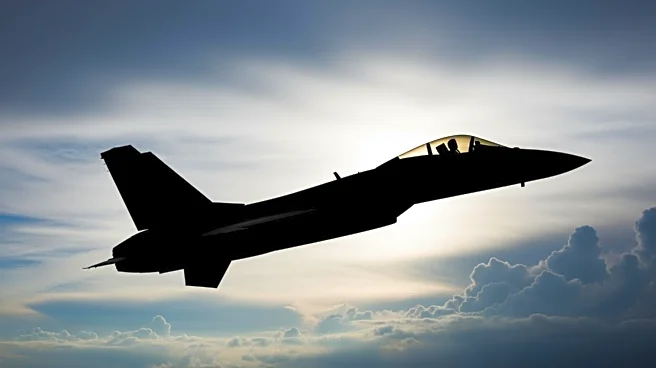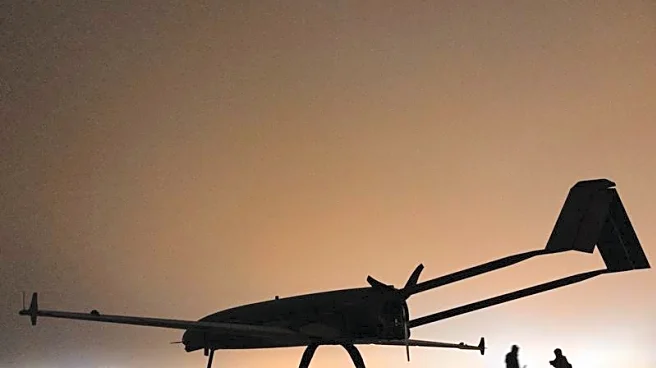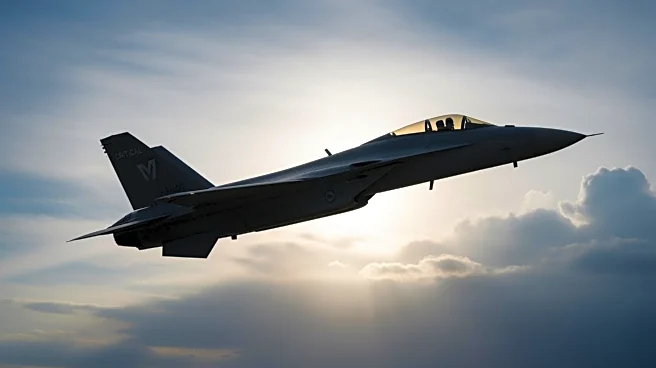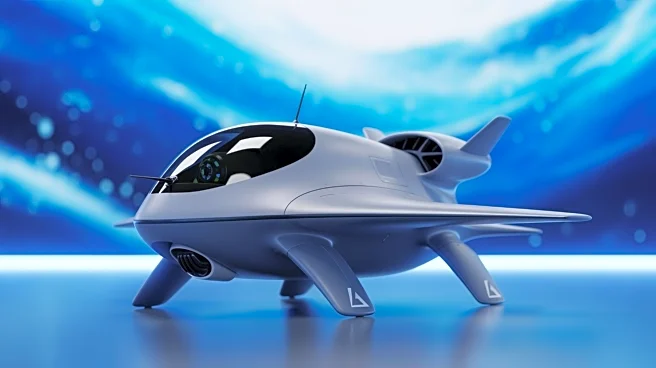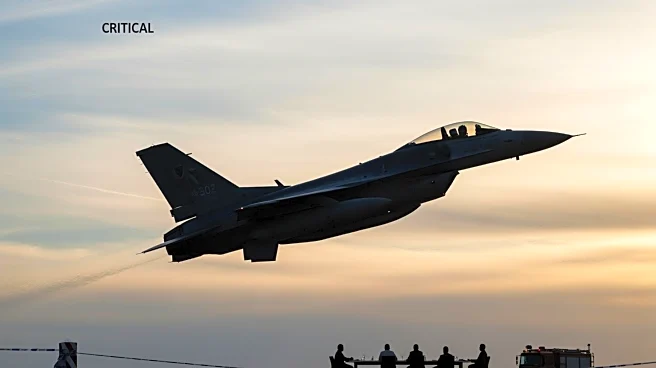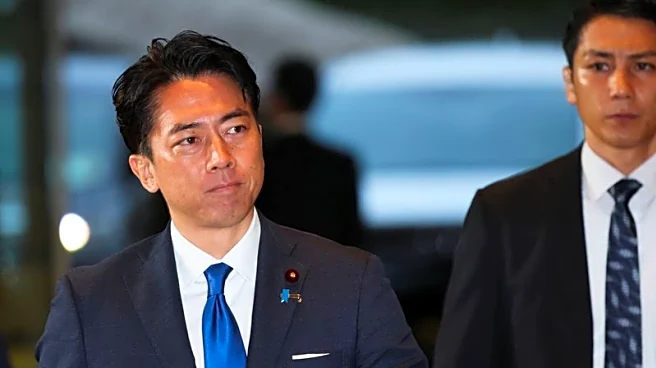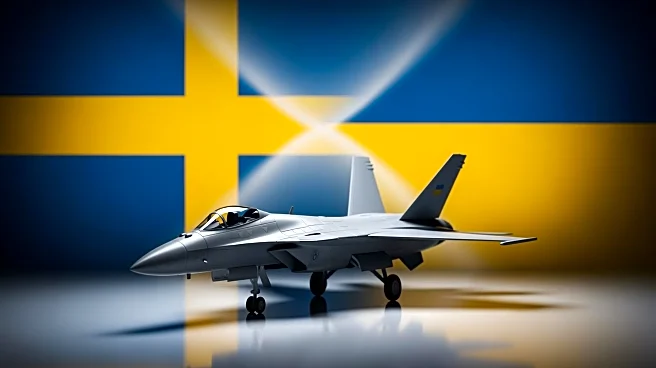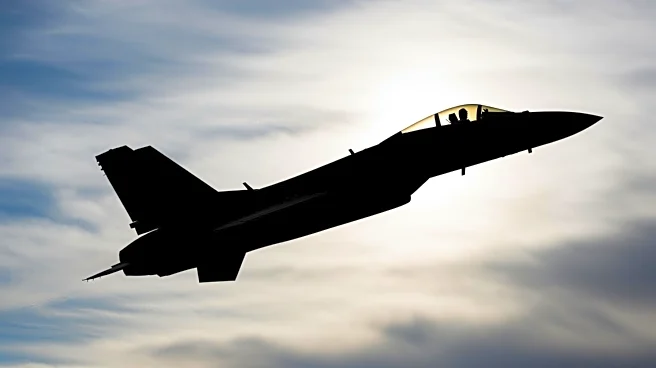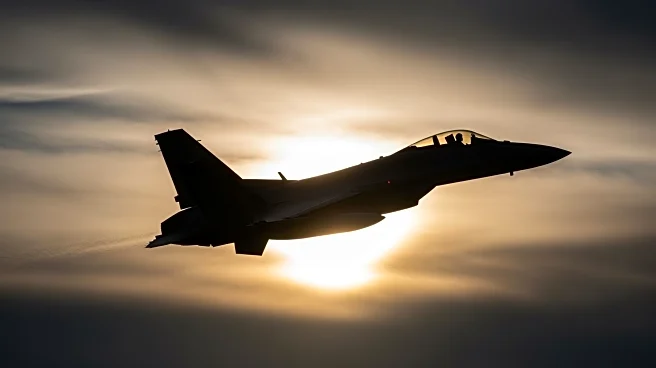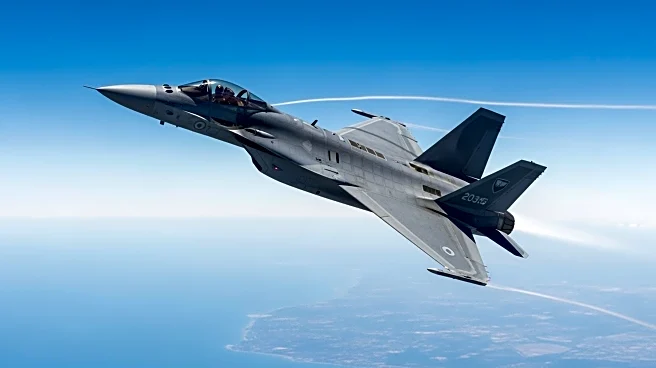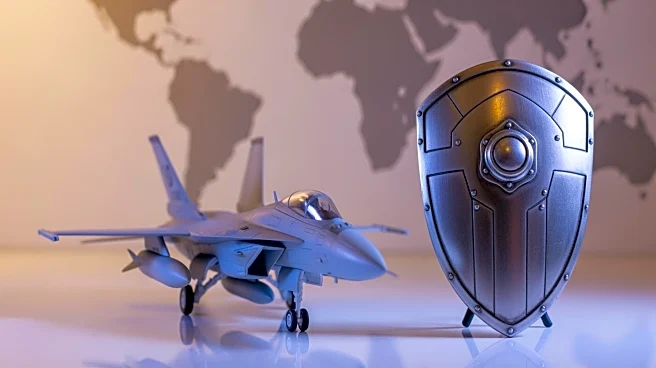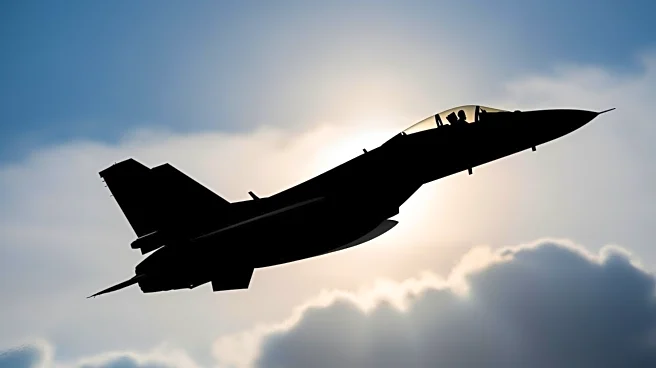What's Happening?
Ukraine is advancing its efforts to bolster its defense capabilities by securing Swedish Gripen-E fighter jets. On October 22, 2025, Ukrainian and Swedish officials signed a letter of intent for the export of up to 150 Gripen-E aircraft to Ukraine. This
move is part of Ukraine's ongoing strategy to acquire advanced fourth-generation fighter jets capable of operating from austere airstrips. Swedish Defense Minister Pål Jonson confirmed Ukraine's request for 100 to 150 aircraft, with the Swedish government exploring long-term financing options for the deal. The Gripen-E variant, known for its advanced electronic warfare capabilities, is expected to provide Ukraine with a significant advantage against electronic-warfare and missile threats. The first deliveries of these aircraft could commence in approximately three years, with full delivery potentially taking a decade or more.
Why It's Important?
The acquisition of Swedish Gripen-E fighter jets is a strategic move for Ukraine, enhancing its military capabilities amid ongoing regional tensions. The advanced features of the Gripen-E, including its electronic warfare capabilities and ability to operate from shorter airstrips, are crucial for Ukraine's defense strategy. This deal not only strengthens Ukraine's air force but also signifies a deepening defense relationship between Ukraine and Sweden. The potential delivery of up to 150 aircraft represents a substantial investment in Ukraine's military infrastructure, potentially altering the balance of power in the region. For Sweden, this deal underscores its role as a key player in European defense exports, potentially boosting its defense industry.
What's Next?
The next steps involve finalizing the financing mechanisms for the aircraft purchase and beginning the production process. As the first deliveries are expected in three years, both countries will likely engage in further negotiations to ensure timely delivery and integration of the jets into Ukraine's military operations. The Swedish government and Saab, the manufacturer, will need to coordinate closely to meet the production demands. Additionally, this development may prompt reactions from neighboring countries and international stakeholders, potentially influencing regional security dynamics.
